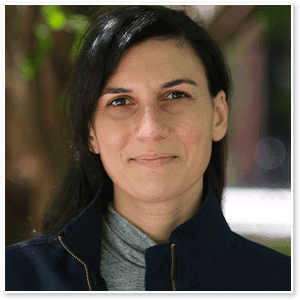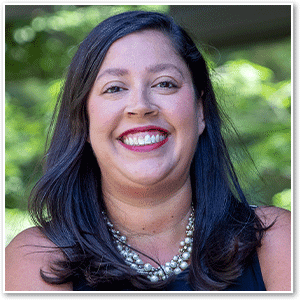The Editors of ACS Infectious Diseases and the ACS Division of Biological Chemistry (BIOL) are pleased to announce the winners of the 2022 ACS Infectious Diseases Young Investigator Awards: Tania Lupoli, New York University, USA Laura Sanchez, University of California, Santa Cruz, USA John Whitney McMaster University, Canada This annual award is presented to outstanding […]

The Editors of ACS Infectious Diseases and the ACS Division of Biological Chemistry (BIOL) are pleased to announce the winners of the 2022 ACS Infectious Diseases Young Investigator Awards:
- Tania Lupoli, New York University, USA
- Laura Sanchez, University of California, Santa Cruz, USA
- John Whitney McMaster University, Canada
This annual award is presented to outstanding young investigators in the field of infectious diseases at ACS Fall. If you’re attending ACS Fall 2022 in Chicago, you’re invited to come see the winners speak at the award symposium, which will be hosted by BIOL on Sunday, August 21, 8 a.m. to 11:30 a.m. at the Marriott Marquis Chicago, Glessner House C.
Read on to learn more about each of the three winners.
Tania Lupoli

Tania Lupoli is an assistant professor of chemistry at New York University in New York City.
“Dr. Lupoli was selected because of her impressive research program applying chemical biology tools to study infectious diseases,” says ACS Infectious Diseases Editor-in-Chief Courtney C. Aldrich. “Specifically, the committee was impressed by her research to understand the role of bacterial chaperones in combating immune stress from the host and her recent publication on overcoming rifamycin resistance in mycobacteria.”
We asked Dr. Lupoli to tell us more about herself. The answers she gave are below.
What inspired you to pursue your area of research?
I became interested in chemical biology research during my undergraduate years in the lab of Bobby Arora, which inspired me to pursue a Ph.D. During graduate school, my project was a collaboration between Dan Kahne (Department of Chemistry) and Suzanne Walker (Department of Microbiology and Immunology), and so I often attended microbiology research seminars. At this time, I became excited about the diversity of microbes in nature and the many unknowns that still existed about antibiotics’ modes of action. Through various projects, I saw that chemical tools offered unique lenses to look at problems in microbiology, and this realization drove the research problems that I later pursued.
Describe a key turning point in your research.
One key eureka moment in the lab occurred during my Ph.D. work. I used an old stock of antibiotic in a bacterial protein activity assay and found that we could detect a new biochemical function for this protein that was typically inhibited by the active antibiotic. It was a classic example of a mistake that led to a discovery, and it was a great moment that led to a new direction in my research.
If you weren’t a medicinal chemist, what would you be?
I would be a restaurant food critic (for The New Yorker)!
Laura Sanchez

Laura Sanchez is an associate professor, chemistry and biochemistry, at University of California, Santa Cruz.
“Dr. Sanchez was chosen based on her outstanding research program applying cutting-edge mass spectrometry techniques, including imaging mass spectrometry, to study pathogens in vitro and in host tissues,” says ACS Infectious Diseases Editor-in-Chief Courtney C. Aldrich. “Her work to understand how bacteria use small-molecules to colonize the host as well as her research program to understand biofilm formation were deemed highly impactful by the review committee.”
We asked Dr. Sanchez to tell us more about herself. The answers she gave are below.
What inspired you to pursue your area of research?
I was trained as a natural product chemist and was always fascinated by the chemical arsenal that microbes are capable of producing. During my postdoctoral research I was excited to learn how to apply imaging mass spectrometry to be able to visualize the spatial distributions natural produce occupy on agar, and now in my own lab we are very excited to extend this information to host microbe interfaces and complex microbial communities.
Describe a key turning point in your research.
For me a key turning point early on was realizing that spatially driven metabolomics was an important factor in finding meaning in the wealth of data that can be obtained from a metabolomics experiment, especially when there are multiple microbial species, or a microbe and host being examined. The timing of production and area a given specialized metabolite occupies is very specific and while it can be challenging to adapt the biological system to be compatible for an imaging mass spectrometry experiment, it provides an amazing picture for chemical microbiologist to interpret.
The technological advances of the instrumentation itself has been fantastic to watch as well within the last decade even, with added dimensionality such as ion mobility and tandem mass spectrometry to definitively identify these metabolites directly from the tissues or microbes.
If you weren’t a medicinal chemists, what would you be?
If I didn’t have a career as a chemist, I always thought I would probably end up as a baker. This might not be surprising since my Ph.D. advisor, Roger Linington, told me natural product chemists like baking and sudoku. My lab enjoys my kitchen chemistry products 😉
John Whitney

John Whitney is the Canada Research Chair in Molecular Microbiology and the Burroughs Wellcome Investigator in the Pathogenesis of Infectious Disease at McMaster University in Ontario, Canada.
“Dr. Whitney was selected for his pioneering work on bacterial secretion systems (type VI and VII) in gram-negative and gram-positive bacteria, says ACS Infectious Diseases Editor-in-Chief Courtney C. Aldrich. “Exploitation of these systems may provide a novel method to develop new antibiotics.”
We asked Dr. Whitney to tell us more about himself. The answers he gave are below.
What inspired you to pursue your area of research?
Lipid membranes play an essential role in all cellular life, yet their existence also adds a layer of complexity for several biological processes, including the secretion of proteins from the cytoplasm into the extracellular environment. When I learned that pathogenic bacteria possess numerous multi-subunit macromolecular machines that facilitate protein secretion (typically of protein toxins), I became fascinated with this area of research and have pursued it ever since.
Describe a key turning point in your research.
One area of interest in our lab is the discovery and characterization of secreted proteins with antibacterial activity. These antibacterial toxins often possess modes of action that represent novel mechanisms of inhibiting bacterial growth. One particularly memorable discovery was a toxin produced by Pseudomonas aeruginosa that specifically depletes ADP and ATP in competitor cells via the pyrophosphorylation of these essential nucleotides.
If you weren’t a biological chemist, what would you be?
As my graduate students can attest to, I can be overly attentive to detail when it comes to scrutinizing experimental data. I suspect that this trait would be useful in non-scientific vocations such as accounting. So, while it may not have the same eureka moments as academic science, I think that becoming a chartered accountant might have been my most realistic career option if science didn’t work out.
